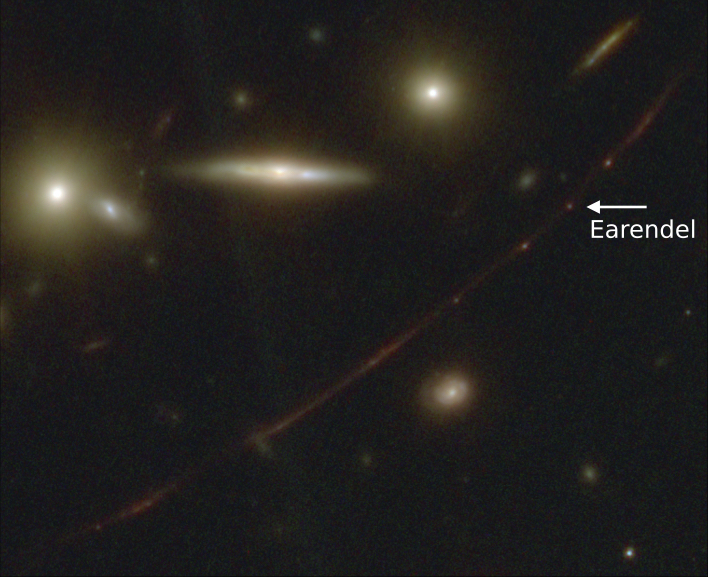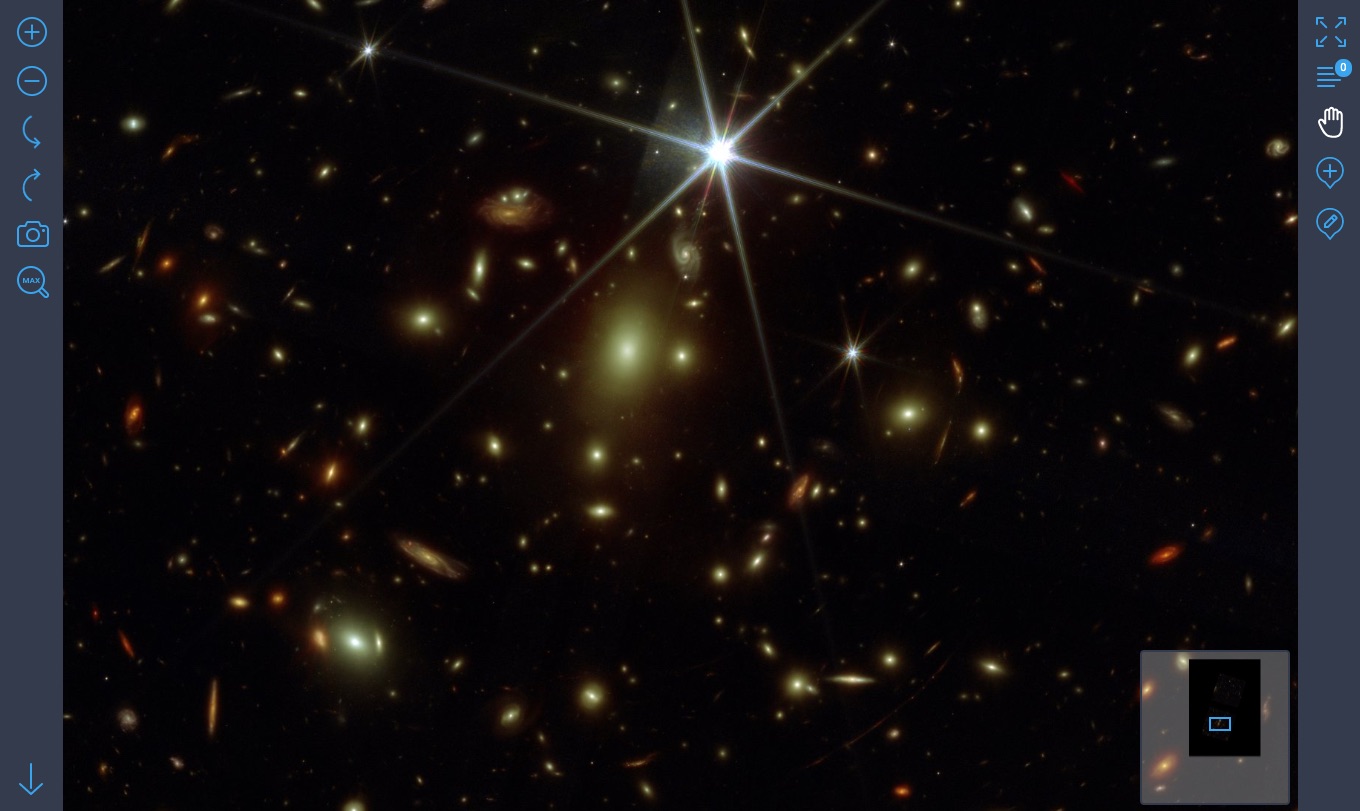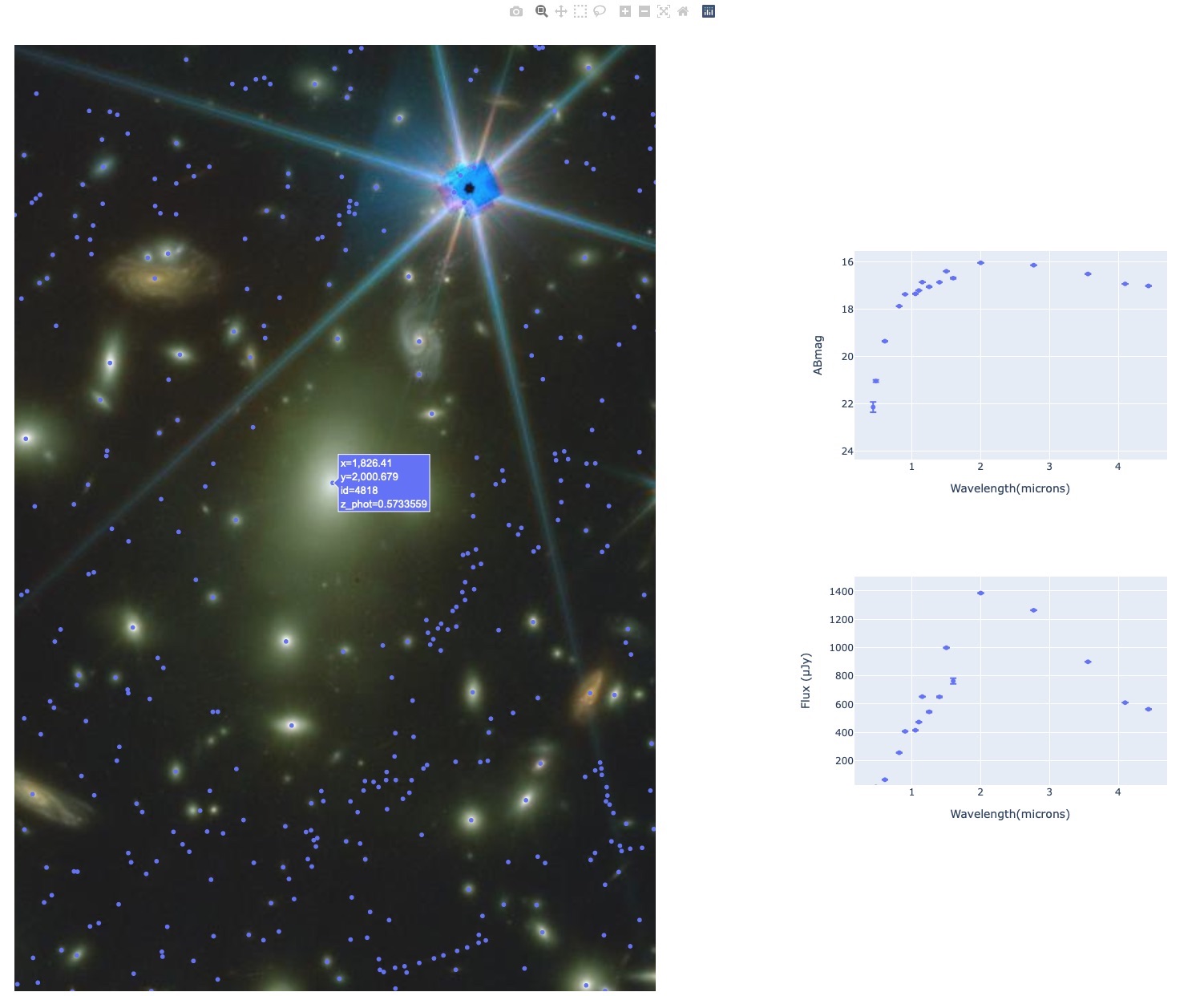The most distant star known
seen as it was 13 billion years ago

Earendel is an individual star / multiple star system (binary / trinary...) that we are able to see very far away thanks to gravitational lensing. Normally at these distances, the smallest features we see are star clusters (hundreds of stars) within a galaxy. The lens and Earendel are perfectly aligned, magnifying its image by a factor of thousands.
Earendel resides in a galaxy known as the Sunrise Arc, the most highly magnified galaxy yet known in the first billion years. It is at redshift z ~ 6.2, and it light has taken 13 billion years to reach us. Earendel and the Sunrise Arc are gravitationally lensed and magnifed by the galaxy cluster WHL0137-08 (z = 0.566).
Brian Welch discovered Earendel in Hubble images (Welch et al. 2022a) and also studied the Sunrise Arc (Welch et al. 2022b), originally discovered by Brett Salmon et al. (2020) in the RELICS survey.
New JWST images reveal more details about Earendel, including its colors observed in 8 NIRCam filters spanning 0.8 – 5.0 µm. Brian Welch led the new analysis out now on the arXiv (Welch et al. 2022c)!


